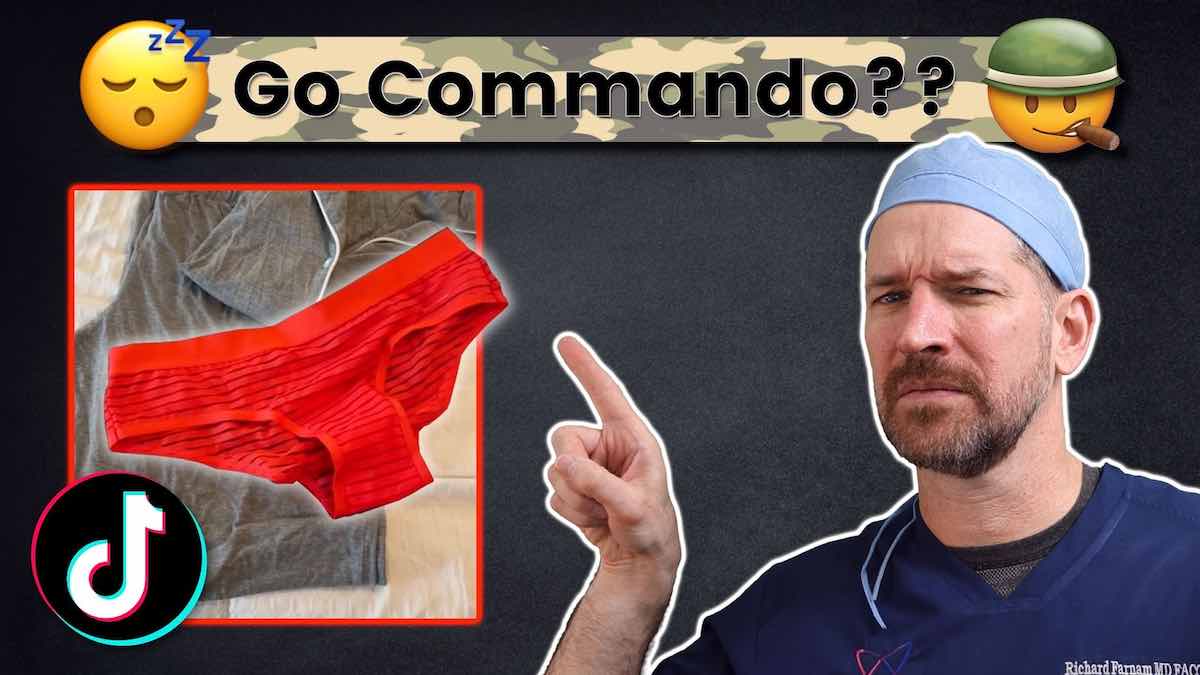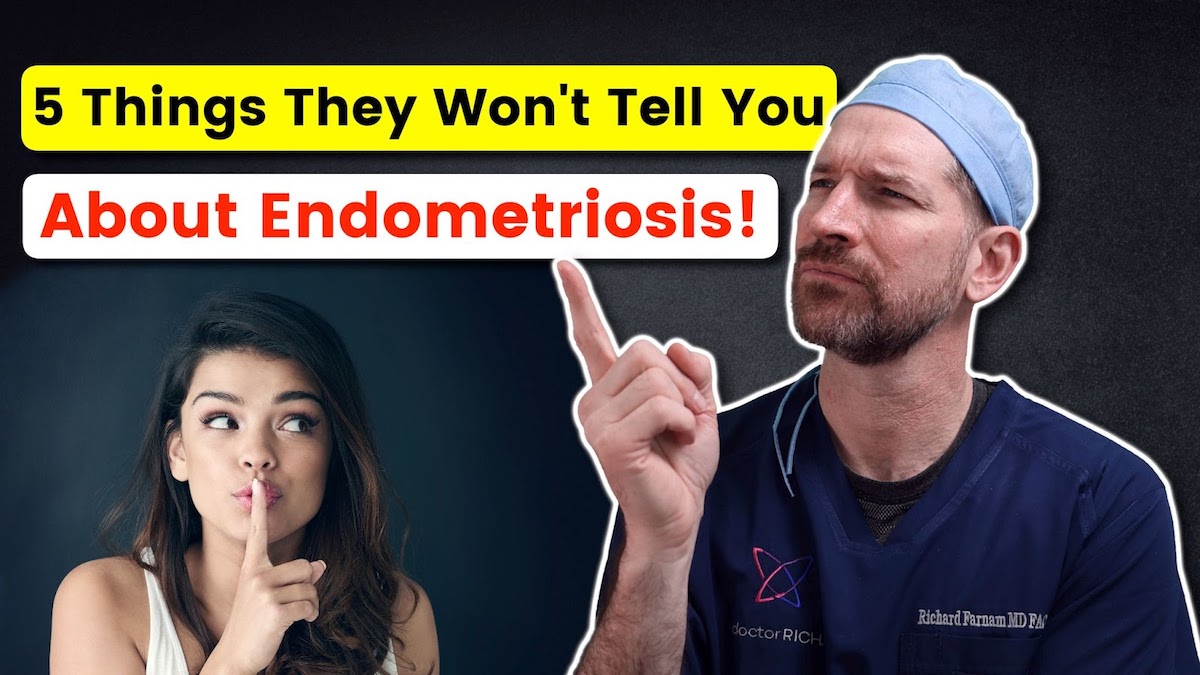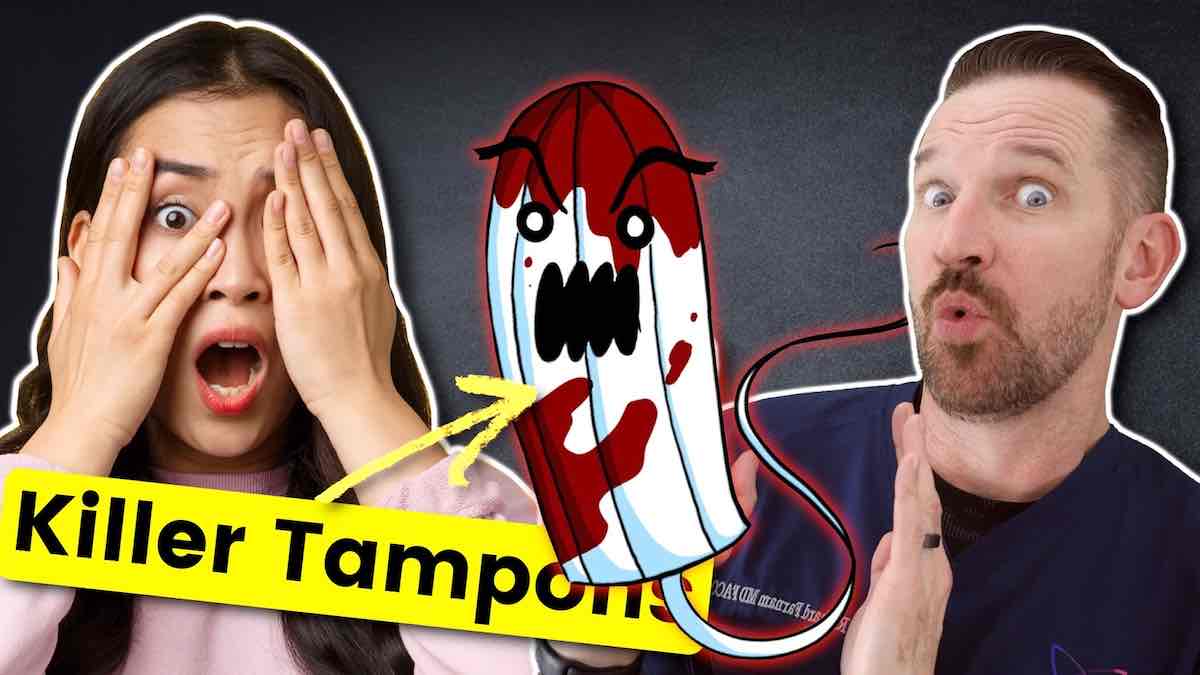Welcome back to the Doctor Rich Channel. Today we’re going to talk about ovarian cysts. If you’ve ever had an ovarian cyst: What is the most likely diagnosis, how is it worked up, and what can you do about it?
Don’t have time to read this post? Watch the video here instead!
If you watched the Four Phases of Menstruation video (and I know that you have, Loyal Subscriber!), you’ll know that every month, the ovary’’s job is to make a cyst. It starts out as a tiny little follicle, grows up into a mature cyst, and then undergoes the process of ovulation.
What gets left behind is something called the corpus luteum cyst. So this is just a progesterone-secreting cyst that helps support the pregnancy. Now, sometimes the cyst can have a blood vessel that can break into it, and it can become a hemorrhagic cyst. It can be anywhere from a speck to a large five- or even ten-centimeter cyst, which actually can cause symptoms such as pain, pressure, bloating.
And although sometimes the symptoms can be quite severe, this is a self-limiting process. The body will absorb all functional cysts over time, and the treatment strategy is to simply observe and repeat an ultrasound in six to eight weeks. Over that time period, the body will reabsorb this cyst, which is a process of the normal function of ovulation. These cysts account for about 99% of all the cysts that are going to happen. When you go see your doctor, you have pain, they get an ultrasound, and they identify a cyst — it’s usually one of these.
There are many other benign tumors and also cancer tumors. For today’s video, we’re going to limit this to the most common benign tumors that you can have.
1. Mature Teratoma (or Dermoid Cyst)
The most common benign tumor (that’s not a functional cyst) is called the mature teratoma or dermoid cyst. This is a cyst that’s made up of a bizarre combination of cell types and tissue from different cell layers. It can contain hair, sebaceous cyst material, sweat glands; it can contain thyroid tissue, lung bone tissue. It’s essentially just this odd combination of “embryology gone wrong.” There are very early cell types that should have differentiated into different mature types of tissue, but they’re all together in one cyst.
What do we need to know about it, and what do we need to do?
Well, there are certain characteristics that we can find on imaging (either an x-ray or ultrasound), particularly if there’s calcified tissue that we’d find in teeth and bone. This is pretty much diagnostic for that dermoid cyst type. These cysts will not go away on their own; they’ll continue to grow over time — and eventually, they have to be managed surgically.
What are the risks of operating, and what are the risks of waiting?
If we wait for this cyst to grow larger to get a definitive diagnosis, you run the risk of the cyst twisting on its own blood supply. This is called ovarian torsion. It can cut off its blood supply, and you might actually have the entire ovary die (essentially starve itself of blood), and you could lose that ovary — which would be identified at the time of surgery as an ovary that’s no longer viable and has to be surgically removed.
In most of our anatomic structures, we have some duplication. You have two kidneys. You can give your friend a kidney, and as long as the other one’s working at least 20-30%, your body would not know the difference. So you can lose an ovary and still have normal ovarian endocrine function throughout the rest of your life. The challenge is you no longer have a spare. So if something happens to the remaining ovary, you’re in permanent surgical menopause.
Besides twisting, the cyst can also rupture — spilling the sebaceous material, sweaty tissue, and hair all over the abdomen — which can be very irritating. It can actually cause what’s called a chemical peritonitis, and in some cases can result in a severe infection and even be fatal.
Oftentimes when diagnosed early and managed by an expert, this can be removed with laparoscopic or robotic, little tiny incisions, so you leave the operating room with both ovaries and the cyst removed.
2. Endometrioma
One of the other more common cysts of reproductive-age women that are benign is called an endometrioma, also known as a chocolate cyst. Sounds delicious, but it’s terrible!
So the chocolate cyst essentially is made up of old menstrual fluid material that normally would come out on your period every month. But instead of being in the uterus, it has implanted on the ovary and grown into a large, painful cyst. Although not quite as common, this cyst also runs the risk of torsion and rupture. More commonly, it just causes bad period pains that worsen the ALREADY bad period pains that you have because you have endometriosis. You should find an expert skilled in the laparoscopic or robotic removal of endometriosis and endometriotic cysts — and these usually can be managed by removing the cyst itself and the endometriosis tissue, improving your fertility and your pain while leaving both ovaries intact. In extreme cases or after childbearing is done, occasionally the ovaries have to be removed to prevent the reoccurrence of another endometriosis cyst.
3. PCOS
A few other cysts that we should probably keep in the differential diagnosis is polycystic ovarian syndrome (PCOS), which can easily be differentiated from endometriosis and dermoids on ultrasound because it isn’t one large, separate cyst; it’s multiple follicles on both ovaries.
4. Ectopic Pregnancy
Another sneaky cyst is the ectopic pregnancy, meaning a pregnancy that doesn’t occur in the uterus. This type of pregnancy actually occurs somewhere else in the body (most commonly the tube), causing the tube to form a large cystic-appearing structure in ultrasound. This is why it’s important to get a pregnancy test when you’re doing the differential for these types of cysts.
5. Hydrosalpinx
Another tubal cyst is called a hydrosalpinx, which is not associated with pregnancy, but it is a dilated, fluid-filled tube most commonly associated with endometriosis or pelvic inflammatory disease. In most circumstances, the tube cannot be repaired and normal function restored. The tube has to be removed, and fertility options would then include assisted reproductive technology such as in vitro fertilization.
6. Pedunculated Fibroid
Also in the category of sneaky cysts is a pedunculated fibroid. So this is actually a smooth muscle tumor of the wall of the uterus, but it’s actually hanging off the side of the uterus by a stalk, and it creeps right up next to the ovary. On ultrasound, it can look like a solid ovarian tumor, but it’s actually just a fibroid tumor of the uterus. It’s a fairly simple process of a laparoscopic approach to surgically remove the fibroid.
7. Tubal Ovarian Abscess
In some circumstances, patients have a cyst that’s associated with pain, high fever, and a white blood cell count. This is most likely due to a tubal ovarian abscess or a cyst that results from inflammation from an infection that involves both the tube and ovary. Unfortunately, many times this requires the surgical removal of both the tube and ovary to prevent the infection from progressing (and even becoming fatal).
Thanks for joining us on our tour of benign ovarian cysts, from painful endometriomas to downright gross dermoid tumors. What’s not painful and gross is being a subscriber — so drop down and hit that subscribe button, and we’ll see you in our next video.




